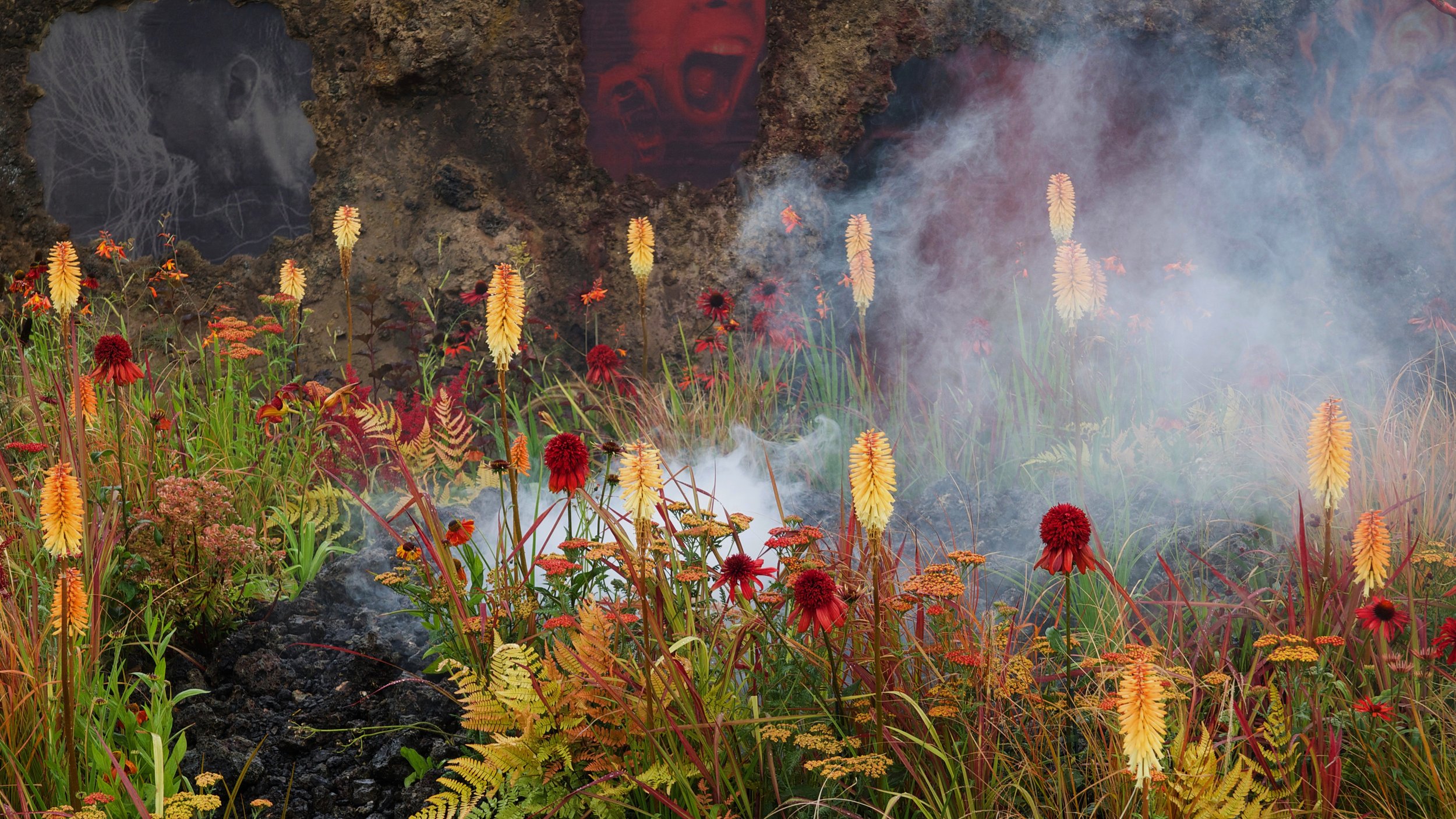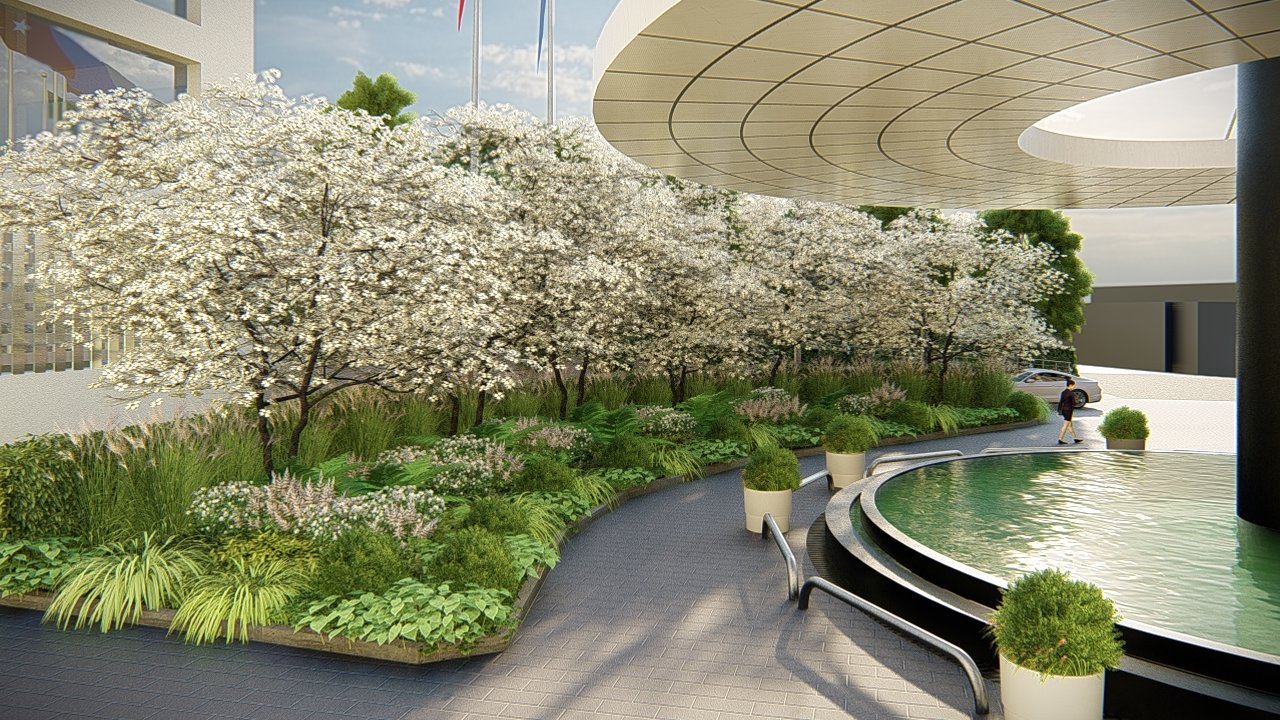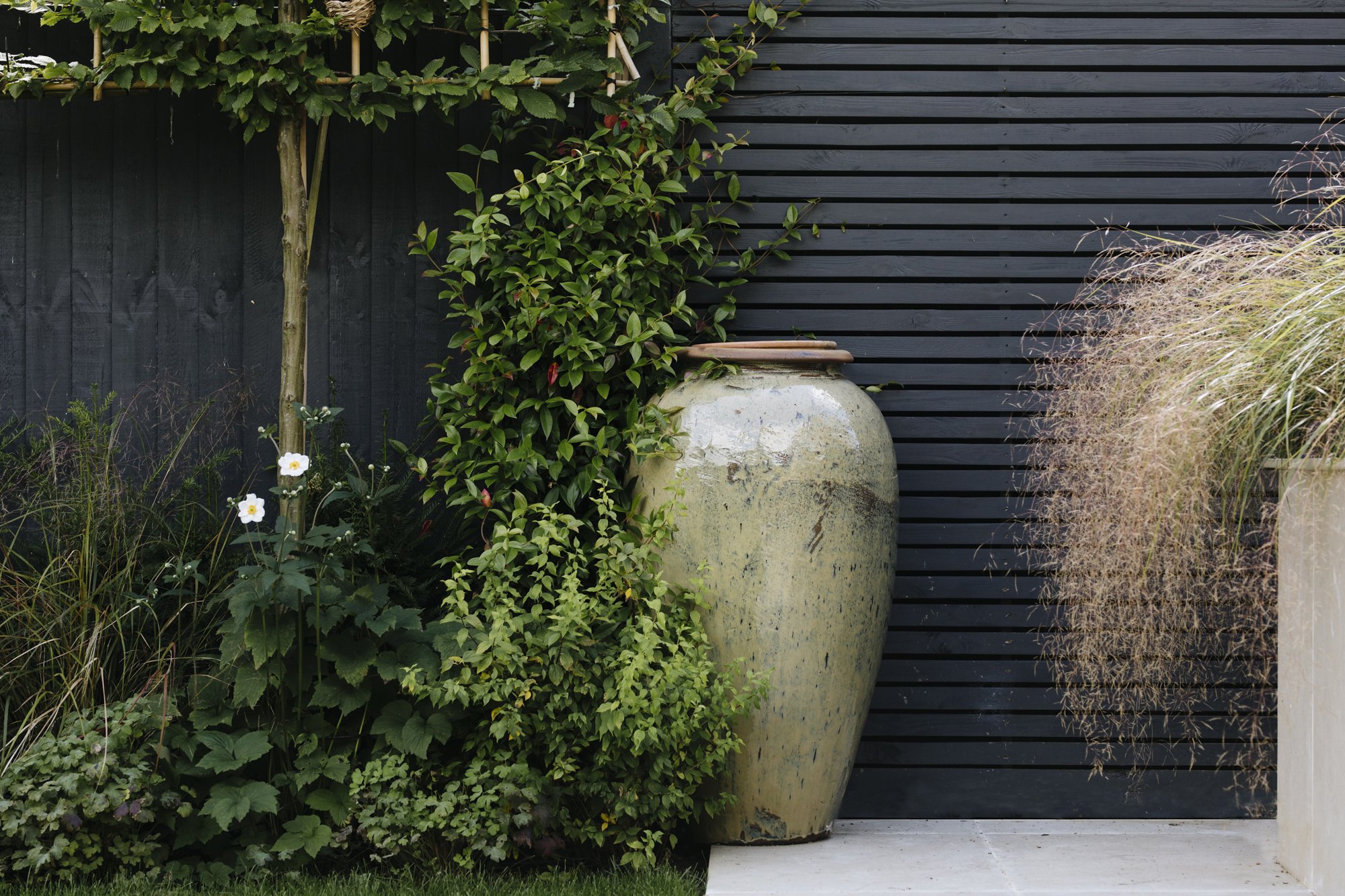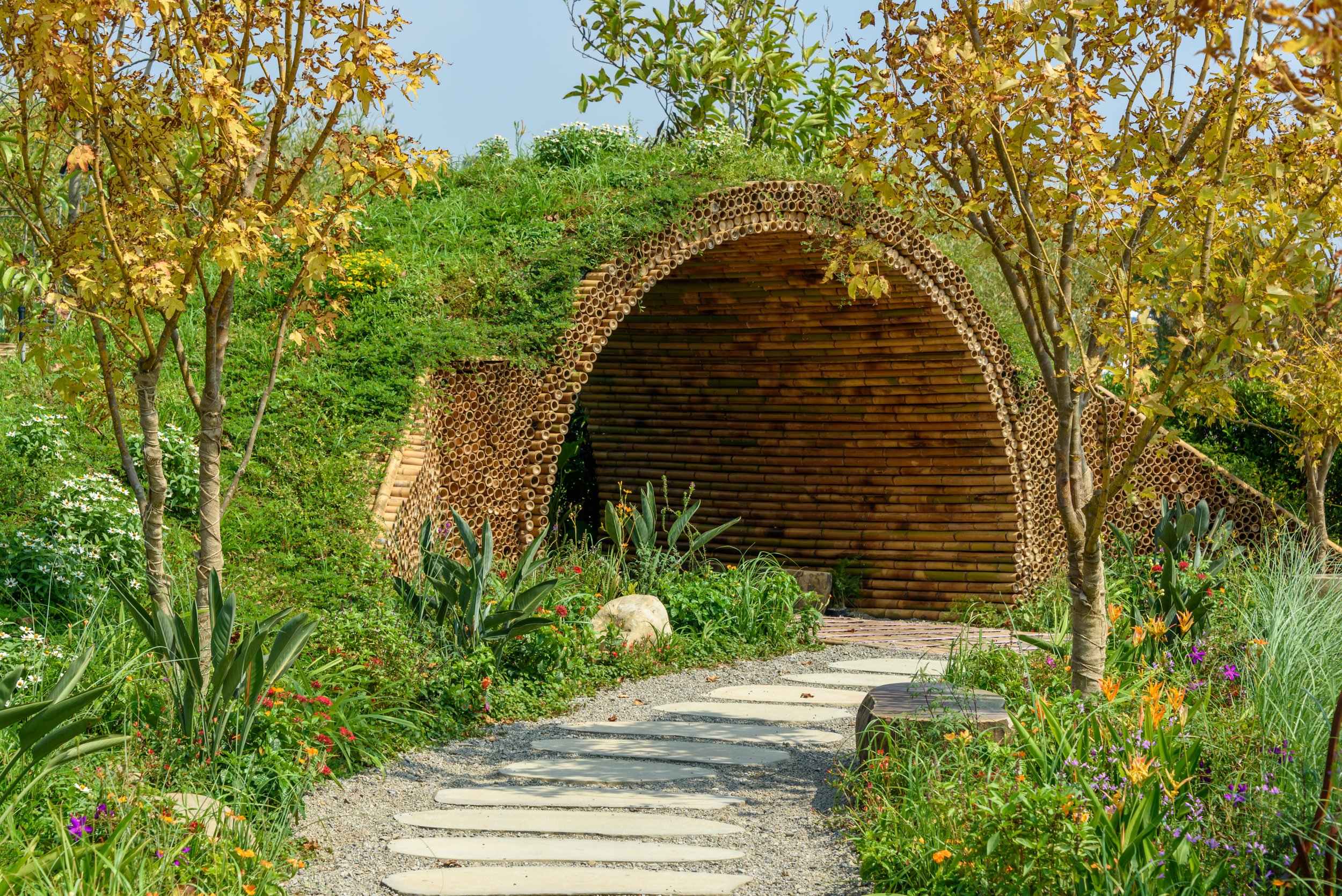5 Key Landscape Design Features To Use This Year
Designed by Nilufer Danis Studio
The top amenities requested by landscape architects working on residential projects include outdoor design components and features like fire pits and fireplaces, practical and decorative lighting, and wireless connectivity.
So what are your options when it comes to designing your outdoor space? Let's take a look at some popular landscape design features for this year!
What are landscape design features?
Landscape design features elevate your landscape architecture design and, in turn, create a beautiful and functional outdoor space. Key design features are often used to:
Create focal points in your garden or outdoor space that you want to draw the most attention to.
Make an outdoor landscape more functional and comfortable for its users.
A landscape architect or garden designer will review both your space and brief, before proposing key features in accordance with the client's brief, existing space, garden style, architecture and budget.
The practice of landscaping involves making aesthetic and functional changes to the ground of your property or preserving existing ones. A landscaping feature is any fixed element in your yard that has an impact on how your garden looks overall or how it functions practically.
5 basic elements of landscape design to elevate your space
The art of landscape design is all about creating a visually appealing outdoor space that is simultaneously aesthetically pleasing, sustainable and functional. It involves carefully crafting a space that fuses natural elements with man-made structures, while also taking into consideration the needs of the people who will be using it and enhance the habitat.
Below, we'll examine some of the key landscape design elements to get you started, before diving into some specific landscape design features to truly transform your space.
Key elements of landscape design include:
Line – A Path to Beauty: The use of lines is an important aspect of landscape design. It is used to create a sense of movement and flow within the garden. Straight lines can be used to create a sense of formality and structure, while curved lines add an organic and natural feel. Whatever the choice, the line design should be subtle and blend seamlessly with the surrounding space.
Colour – Adding Depth and Personality: The use of colour in landscape design can greatly enhance the overall aesthetic of a space. Colour complements the natural elements, adding depth and personality to the garden. When selecting colours, it's important to choose a palette that works in harmony with the interior design, architecture and surrounding area.
Form – Shaping Your Space: Form in landscape design refers to the shape and design of the objects in your space—like your trees, plants, and structures. Whether you're working with hedges, topiary, or plant beds, creating a sense of form is essential to the overall aesthetic of the garden. Many forms exist in a landscape, such as the rectilinear shapes of the house, shapes of walkways and driveways. The shapes of these objects can create a more formal space by utilising an axial layout—or a less formal area by having less defined, free forms.
Texture – Adding Interest and Depth: Texture is a critical aspect of landscape design that brings interest and depth to the space. Using plants with distinct textures such as glossy leaves, soft petals, or prickly stems creates a fascinating landscape design that keeps the eye interested.
Scale – Keeping Everything Balanced: Scale is the aspect of landscape design that focuses on proportion and balance. Creating an outdoor space that's proportional and balanced is critical to achieving a cohesive and visually appealing look.
5 key landscape design features for your next landscaping project
Here are some popular landscape design features you can incorporate into your landscape – and harmonise with the latest garden design trends too!
Boundary treatment
Designed by Nilufer Danis Studio
Creating boundaries in your garden is not only visually appealing, but also essential for defining the space.
Walls, fences, and hedge plantings provide enclosure, privacy, and screening, giving your outdoor area a sense of seclusion and intimacy. They act as a visual backdrop, allowing you to curate your garden with confidence and purpose.
2. Patio/decking
Designed by Nilufer Danis Studio
A well-designed patio or decking area is the perfect addition to any outdoor space, providing a comfortable and inviting spot for seating and dining.
Whether you want a cosy corner to relax in or a place to entertain family and friends, a patio or decking area can be tailored to your specific needs. Consider adding a pergola feature to enhance the area, providing shade during hot summer days and cover during rainy weather, allowing you to enjoy the space for longer periods.
Paving materials, such as stone and wood or porcelain, should be chosen carefully to complement the garden style, architecture, and your budget. For a natural, warm, and cosy ambiance, opt for wood, which seamlessly blends with the surroundings and complements various building styles.
Work with a landscape architect designer or garden designer to create a patio that perfectly fits the size, shape, and location of your garden. Whether you prefer straight lines or curved designs, your decking area can be customised to suit your garden's unique characteristics.
3. Pathways
Designed by Nilufer Danis Studio
In larger outdoor spaces, incorporating pathways offers numerous benefits, especially when it comes to easy accessibility.
A well-designed path allows for seamless navigation around planting beds and provides convenient access to different areas of your garden.
Whether you need to reach the rear side or simply enjoy a leisurely stroll, a thoughtfully designed pathway can enhance both the functionality and aesthetics of your outdoor space.
4. Focal Points
Designed by Nilufer Danis Studio
Adding focal points to your garden design can transform even the dullest of spaces into something truly remarkable.
Consider incorporating water features, sculptures, pergolas, outdoor fireplaces, or beautiful specimen trees to create eye-catching accents.
Focal points not only add visual interest but also serve as design elements that engage the viewer and create captivating scenery from various viewpoints, including through windows overlooking the garden.
5. Lighting
Designed by Nilufer Danis Studio
Despite the fact that beginners can experiment with straightforward lighting, exceptional design is a skill that is best left to an expert in outdoor lighting. The following criteria are used to evaluate a residential project's needs:
Functionality: What is required for practical and safety reasons.
Accent: lighting is utilised to draw attention to specific areas, focal points and features of the outdoor area.
Style & Emphasis: lighting is essential to creating dramatic views (particularly at night) and adding emphasis to the key features in the space.
By incorporating these five key landscape design features into your next landscaping project, you can create an outdoor space that is both functional and visually stunning.
From defining boundaries to providing comfortable seating areas, these features will elevate your garden design and make it a stylish haven where you can relax, entertain, and enjoy the beauty of nature.
Looking for a landscape designer for your next outdoor project?
In conclusion, landscape design is an art that can add personality, style and luxury to any space. In addition If you work with a competent designer you can save money too!
By working with a professional designer and incorporating landscape design features you can create a magical space that is both inviting and functional, an extension of your home, and a sanctuary for you and your loved ones. So go ahead, let your creativity fly and create a masterpiece that is a feast for the senses.
Nilufer Danis is an multi-award winning garden designer and landscape architect with many contemporary and minimalist garden designs across Central London and beyond.
Nilufer's landscapes and gardens are distinguished by strong structural elements that offer clarity and balance. Designs with clean lines are modern, polished, and minimalistic in contrast to dynamic plants with an elegant colour and texture palette.
GET IN TOUCH WITH US TO TALK THROUGH YOUR LANDSCAPE ARCHITECTURE PROJECT AND TAKE A LOOK AT SOME OF OUR PAST PROJECTS FOR INSPIRATION!
Landscape Design Features FAQs
How do you describe landscape design?
The research, planning, and creation of outdoor living environments is known as landscape design. Today's landscape design incorporates a wide range of features to create beautiful, sustainable and practical outdoor living spaces.
What is a theme in landscape design?
A theme or concept in landscape design provides a character, meaning and style to a space. Once this theme is decided, all features, materials and plants are chosen accordingly. To clarify, think of it like cooking.
What is modern landscape design?
Clean edges, chosen materials and a minimalistic appearance characterise modern landscape design. A property with a contemporary or modern home can benefit greatly from this landscape design style, and it can also provide a welcome contrast to a more conventional architectural style.







